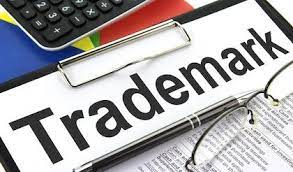
Registering a trademark is a crucial step in protecting your brand identity and intellectual property within your country. However, as businesses expand globally, it becomes essential to consider trademark protection beyond national borders. In this article, we will explore how you can extend trademark protection internationally and ensure your brand is safeguarded in multiple countries.
Table of Contents
- Understanding International Trademark Protection
- The Madrid System for International Trademark Registration
- Filing an International Application
- The Benefits of International Trademark Registration
- Considerations Before International Registration
- Conclusion
- FAQs
1. Understanding International Trademark Protection
Trademark protection is territorial, meaning that a trademark registered in one country is valid only within that country’s borders. If you wish to use your trademark in other countries, you need to seek protection in each of those countries individually. This can be a time-consuming and costly process, especially if you plan to expand into multiple jurisdictions.
2. The Madrid System for International Trademark Registration
To simplify the process of seeking international trademark protection, the World Intellectual Property Organization (WIPO) established the Madrid System. The Madrid System is a treaty that allows trademark owners to seek protection in multiple member countries through a single international application.
3. Filing an International Application
To use the Madrid System, you must first have a registered or pending trademark application in your home country (the “basic application” or “basic registration”). Once you have the basic application or registration, you can file an international application through the Madrid System. The application is then examined by the International Bureau of WIPO, and if no objections are raised within a specified period, it is forwarded to each designated member country for individual examination and potential registration.
4. The Benefits of International Trademark Registration
Registering your trademark internationally through the Madrid System offers several benefits:
a. Cost and Time Efficiency
Filing a single international application is generally more cost-effective and time-efficient than filing separate applications in each country.
b. Centralized Management
Once your international registration is granted, you can manage your trademark portfolio in multiple countries through a centralized system, making it easier to maintain and renew your trademarks.
c. Flexibility in Adding New Countries
After the initial registration, you can expand your trademark protection to other member countries by filing subsequent applications, known as “subsequent designations.”
5. Considerations Before International Registration
Before opting for international trademark registration, consider the following:
a. Target Markets
Identify the countries where you intend to do business or where your products/services are likely to be popular. It is not necessary to seek protection in every country, especially if your market presence is limited.
b. Trademark Search
Conduct thorough trademark searches in each country to ensure that your mark does not conflict with existing registrations.
c. Local Trademark Laws
Be aware of the trademark laws and requirements in each country, as they may vary significantly.
6. Conclusion
Expanding your business beyond national borders offers excellent growth opportunities, but it also exposes your brand to new challenges. By seeking international trademark protection through the Madrid System, you can extend the reach of your brand while ensuring its legal protection in multiple countries.
7. FAQs
Q1. Can I use my trademark internationally without registration?
Yes, you can use your trademark internationally without registration. However, having a registered trademark offers stronger legal protection and rights in foreign jurisdictions.
Q2. Can I register a trademark directly in each country?
Yes, you can file individual trademark applications in each country where you wish to seek protection. However, this can be time-consuming and costly.
Q3. Which countries are members of the Madrid System?
A list of member countries of the Madrid System can be found on the WIPO website.
Q4. Can I add new countries to my international registration in the future?
Yes, you can add new countries to your international registration through subsequent designations, provided those countries are members of the Madrid System.
Q5. Can I cancel or modify my international registration?
Yes, you can cancel or modify your international registration in part or in full at any time. This provides flexibility in managing your trademark portfolio as your business needs change.
Note: The information provided here is for general understanding and should not be considered legal advice. For specific legal queries regarding trademarks in the UK, it’s advisable to consult with a qualified legal professional.